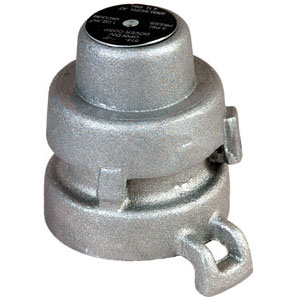Flame Arrester: Ensuring Safety in Hazardous Environments

A Flame Arrester is a safety device designed to prevent the propagation of flames and explosions within pipes, vents, or tanks in industrial systems. It plays a crucial role in protecting equipment, personnel, and the environment from potentially dangerous fire hazards in systems that handle flammable gases, vapors, or liquids. In this article, we will explore what flame arresters are, how they work, their applications, and why they are vital for industrial safety.
What is a Flame Arrester?
A Flame Arrester is a passive safety device that allows the flow of gases or liquids through pipes or vents while preventing the ignition or propagation of flames within the system. Typically installed in pipelines, storage tanks, vents, or other confined spaces, flame arresters use a series of metal or ceramic elements to dissipate heat and extinguish flames. By doing so, they help contain fire hazards and prevent the spread of explosions, keeping operations safe in hazardous environments.
How Does a Flame Arrester Work?
Flame arresters work by utilizing a mesh or grid structure, often made of metal or ceramic materials, that slows down and cools the flame, thus preventing it from traveling. Here's how they function:
Flame Propagation Prevention: When a flame or explosion occurs, the arrester works by absorbing the heat and dissipating the energy of the flame, preventing it from traveling further into the pipe or system.
Heat Dissipation: The elements inside the arrester absorb the thermal energy from the flame. As the heat is absorbed, the flame's intensity reduces, and it eventually extinguishes.
Flow Continuity: Flame arresters are designed to not impede the normal flow of gases or vapors. They allow gases to pass through while simultaneously preventing any hazardous ignition from continuing through the system.
Cooling Effect: The metal or ceramic mesh inside the flame arrester provides a cooling effect on the flame by increasing the surface area, allowing heat to dissipate quickly.
Types of Flame Arresters
Flame arresters come in different types, each suited for specific applications and environments:
End-of-Line Flame Arresters: These are typically installed at the end of a pipeline or vent to stop any flames from propagating back through the system. They are most commonly used in venting systems, storage tanks, or equipment that could potentially release flammable gases.
In-Line Flame Arresters: These are installed within a pipeline to prevent flames from spreading between various sections of the system. In-line flame arresters are commonly used in fuel pipelines and industrial processes that involve flammable liquids or gases.
Vapor Recovery Flame Arresters: Used in systems designed to recover flammable vapors, these arresters prevent the spread of fire or explosion into the recovery system, protecting sensitive equipment from potential damage.
Detonation Flame Arresters: These are used in high-risk systems where detonation could occur, such as in chemical processing plants. They are specially designed to handle the higher intensity of detonation forces and prevent their spread.
Applications of Flame Arresters
Flame arresters are used in a variety of industries to enhance safety by preventing the spread of flames in hazardous areas. Here are some common applications:
Chemical Processing: In chemical plants, flame arresters prevent the propagation of flames in pipelines that carry flammable gases, vapors, or liquids, reducing the risk of explosions in confined spaces.
Oil and Gas: In the oil and gas industry, flame arresters are used in pipelines and storage tanks to prevent fire hazards when dealing with volatile substances.
Fuel Systems: Flame arresters are vital in fueling systems for both aviation and road transport. They protect storage tanks, pipelines, and filling stations from flashbacks and explosions.
Pharmaceuticals: Pharmaceutical manufacturing plants use flame arresters to protect equipment and ensure that flammable vapors and gases are contained in processes involving solvents, alcohols, and other chemicals.
Wastewater Treatment: In wastewater treatment facilities, flame arresters help to prevent the spread of fire or explosion in systems that may contain flammable gases.
Advantages of Flame Arresters
Prevention of Explosions: Flame arresters are essential for controlling potential explosions by preventing flames from traveling through pipelines or venting systems.
Improved Safety: By stopping flames from propagating, flame arresters reduce the likelihood of accidents, safeguarding personnel, equipment, and the surrounding environment.
Cost-effective: Installing flame arresters is a cost-effective method of enhancing safety, as it reduces the potential for significant damage and the need for costly repairs following a fire or explosion.
Compliance with Safety Regulations: Flame arresters help industries comply with safety standards and regulations, particularly in industries that handle combustible or flammable materials.
Minimal Maintenance: These devices are designed to be low-maintenance, requiring only periodic checks to ensure they are functioning properly.
Maintenance and Installation Tips
Regular Inspection: Flame arresters should be inspected regularly for signs of wear, corrosion, or damage, especially if they are exposed to harsh environmental conditions.
Cleanliness: Ensure that the arrester’s mesh or grid is free from debris, dirt, or other materials that may impair its function. Regular cleaning should be performed as part of routine maintenance.
Proper Sizing: It is crucial to select the appropriate size of flame arrester based on the flow rate and pressure of the system. Consult the manufacturer's specifications to ensure correct installation.
Installation Location: Flame arresters should be installed in strategic locations where they will effectively prevent flame propagation, such as at the discharge points of vents, storage tanks, or at pipeline exits.
Conclusion
A Flame Arrester is a critical safety component in industries dealing with flammable substances. It plays an essential role in preventing the spread of fire or explosions in pipelines, tanks, and other equipment, safeguarding both personnel and assets. By choosing the right type of flame arrester and ensuring proper installation and maintenance, businesses can mitigate fire risks and comply with safety regulations, ensuring a safe and efficient operation.
Ask
Note: IndiBlogHub features both user-submitted and editorial content. We do not verify third-party contributions. Read our Disclaimer and Privacy Policyfor details.




